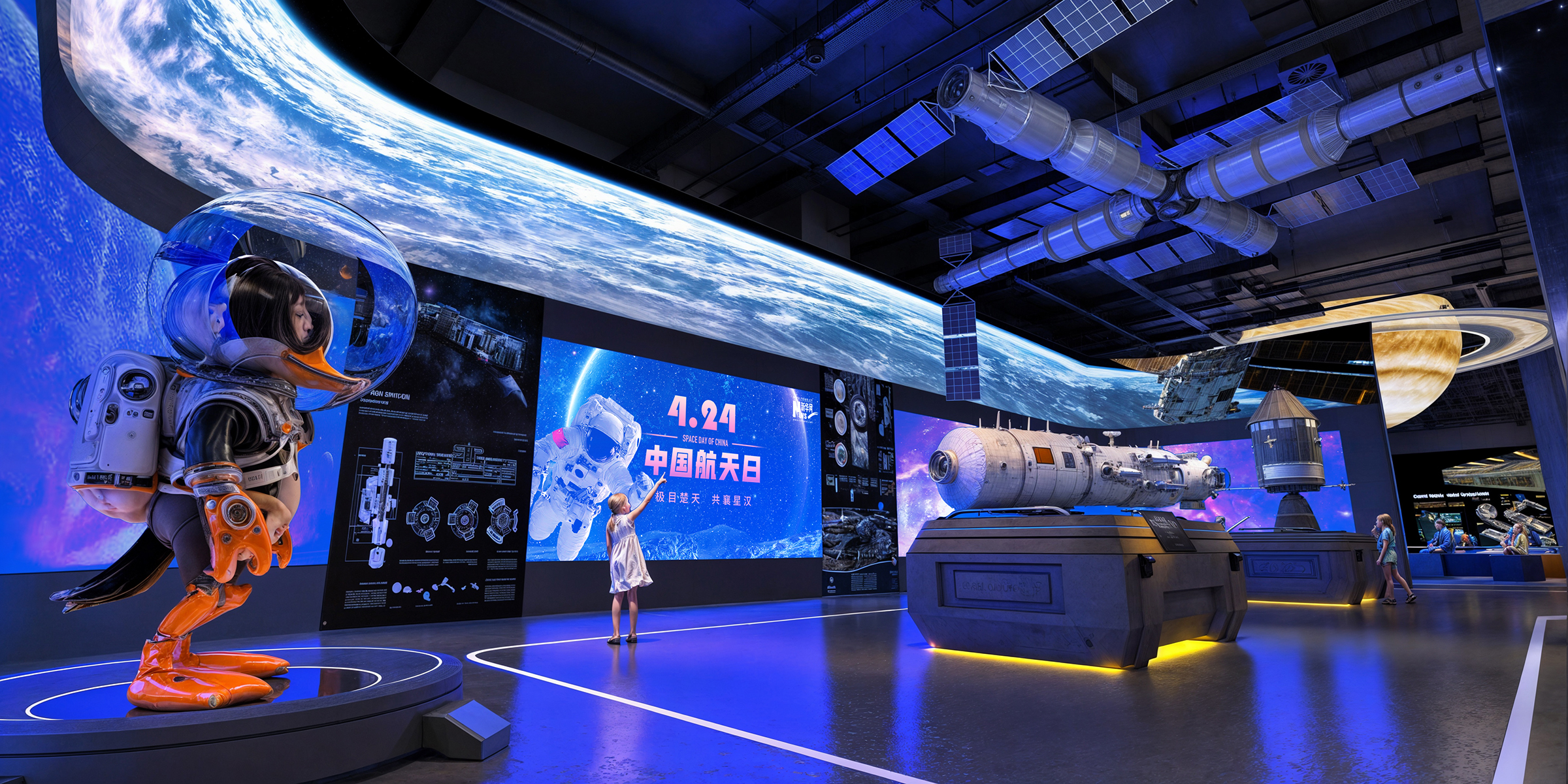
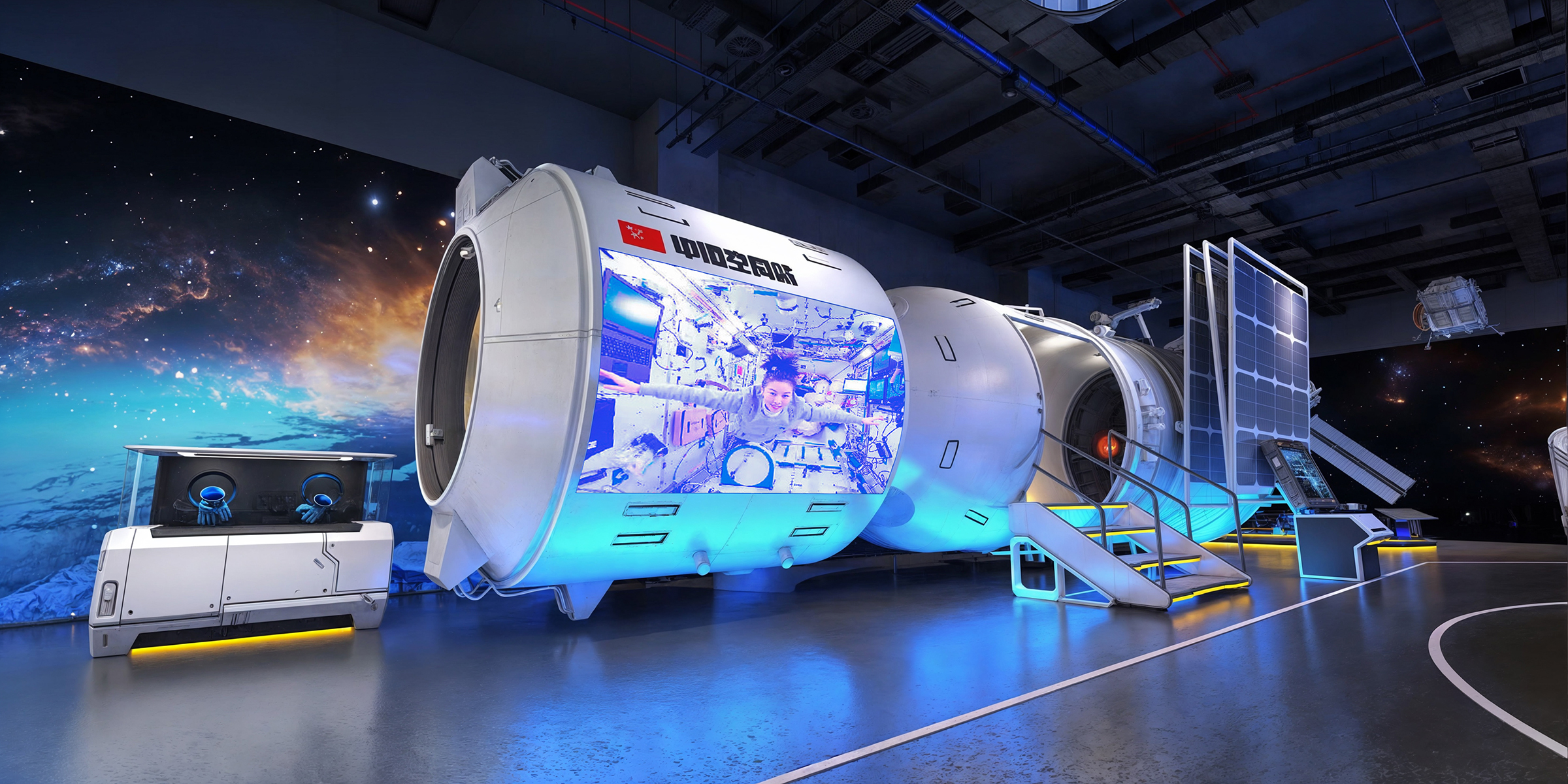
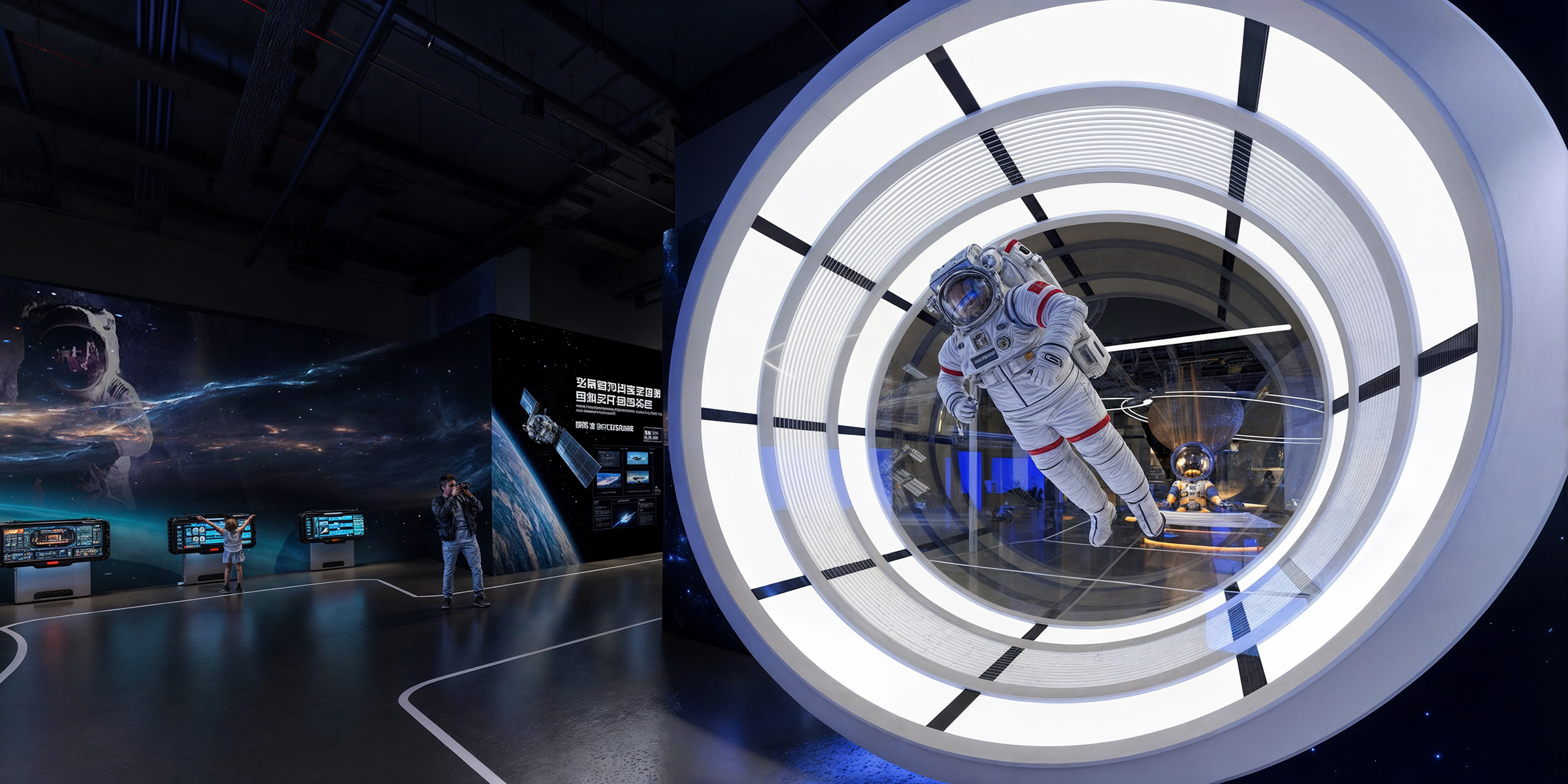
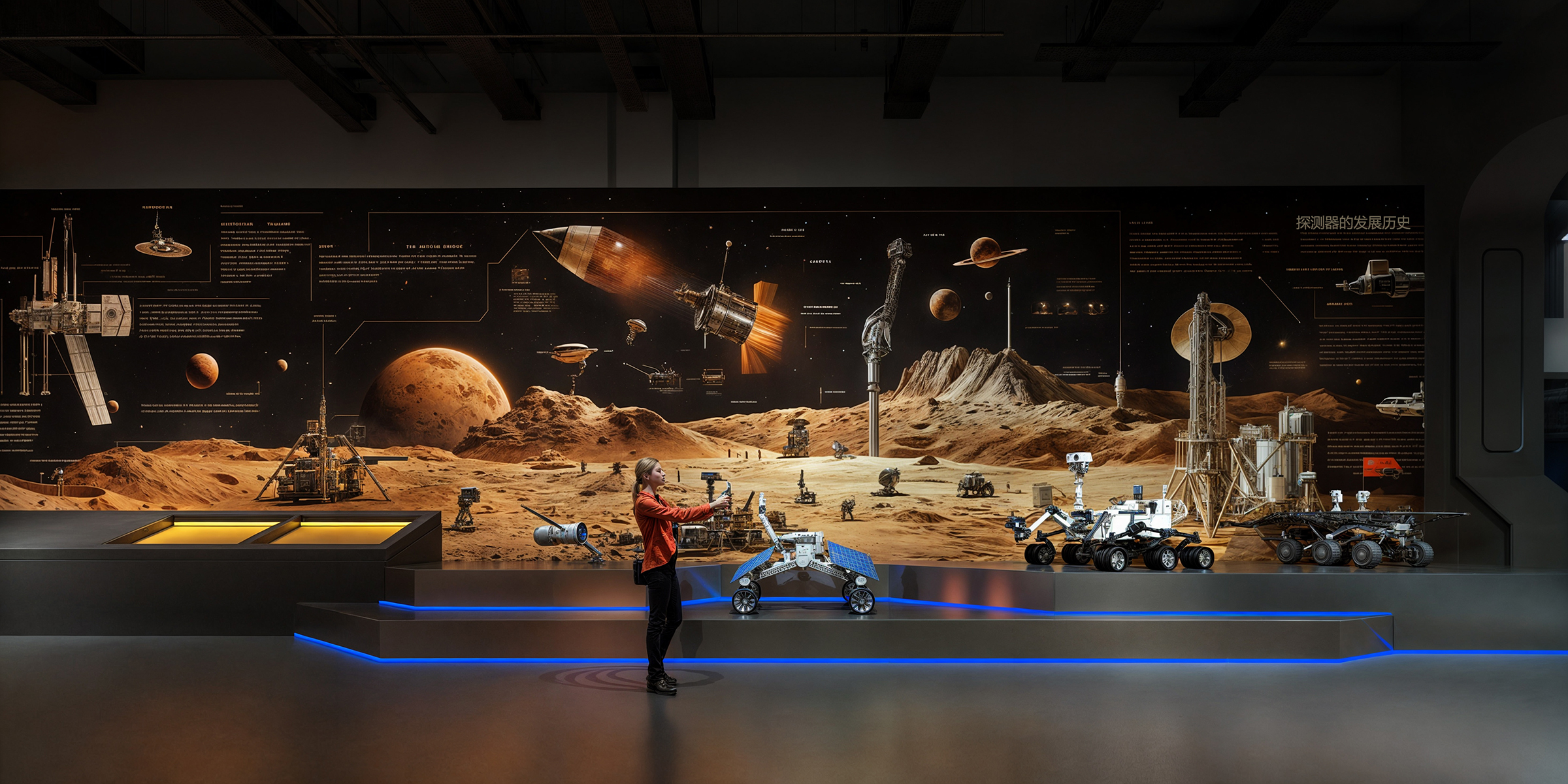
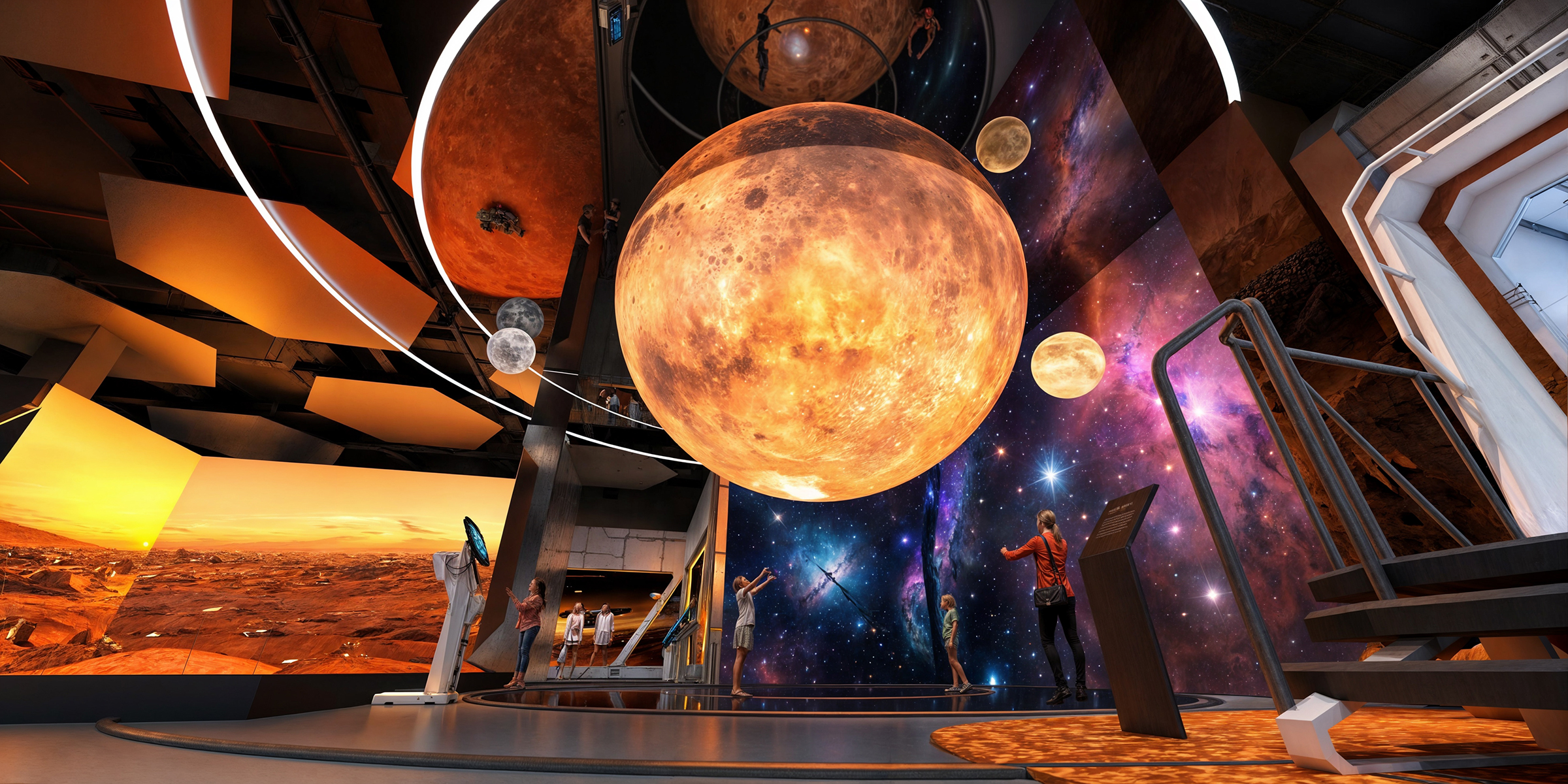
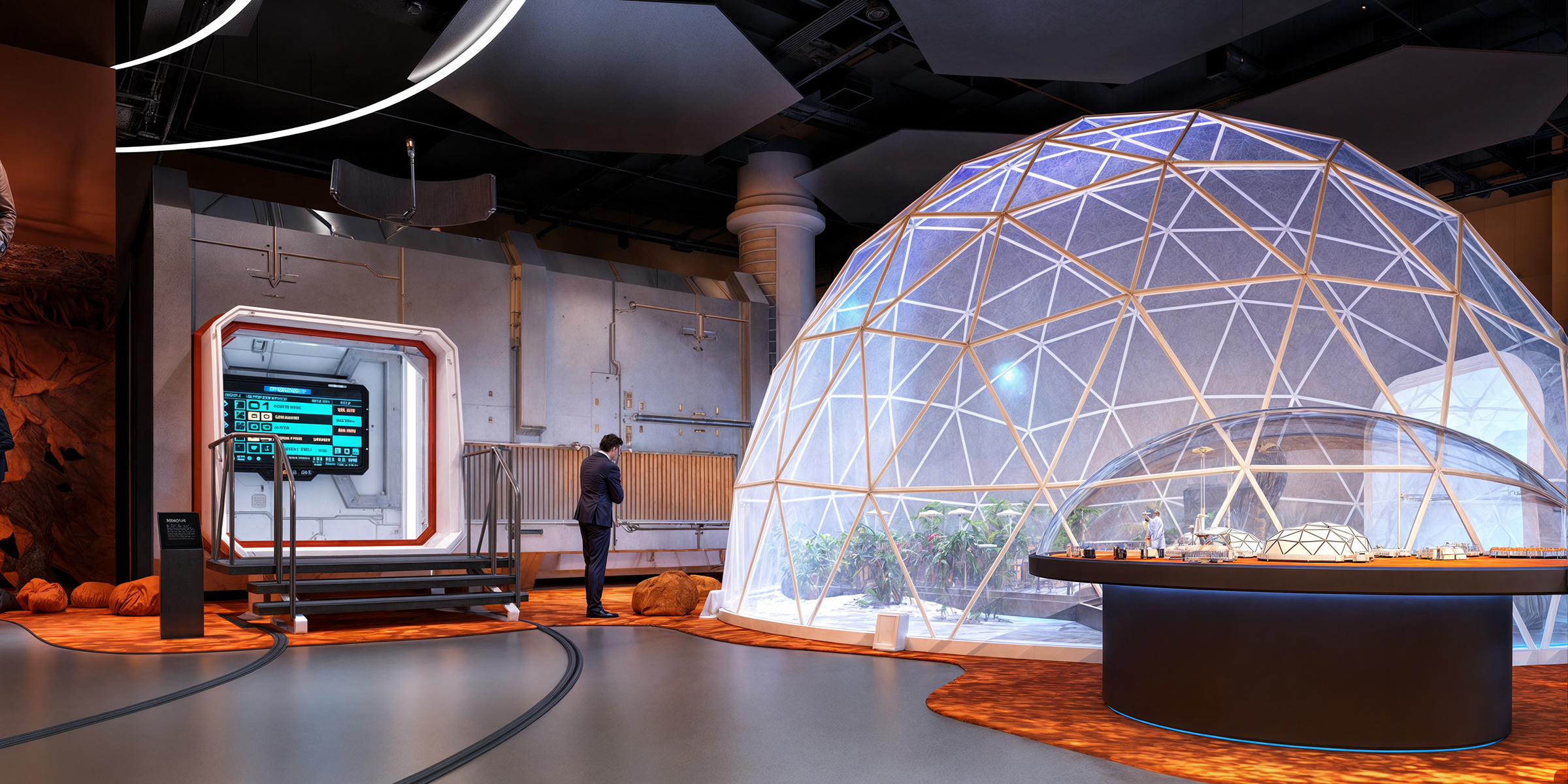
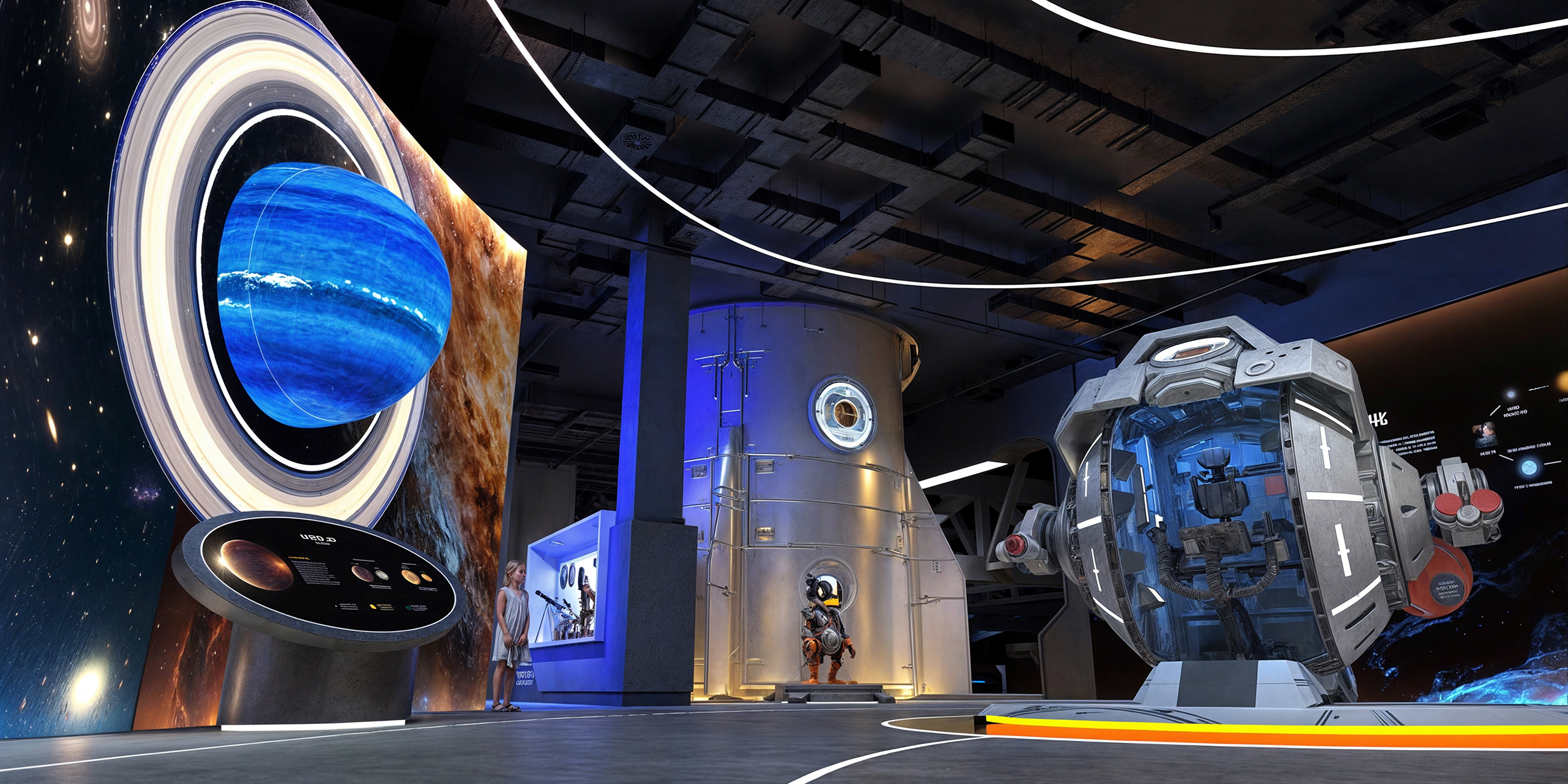
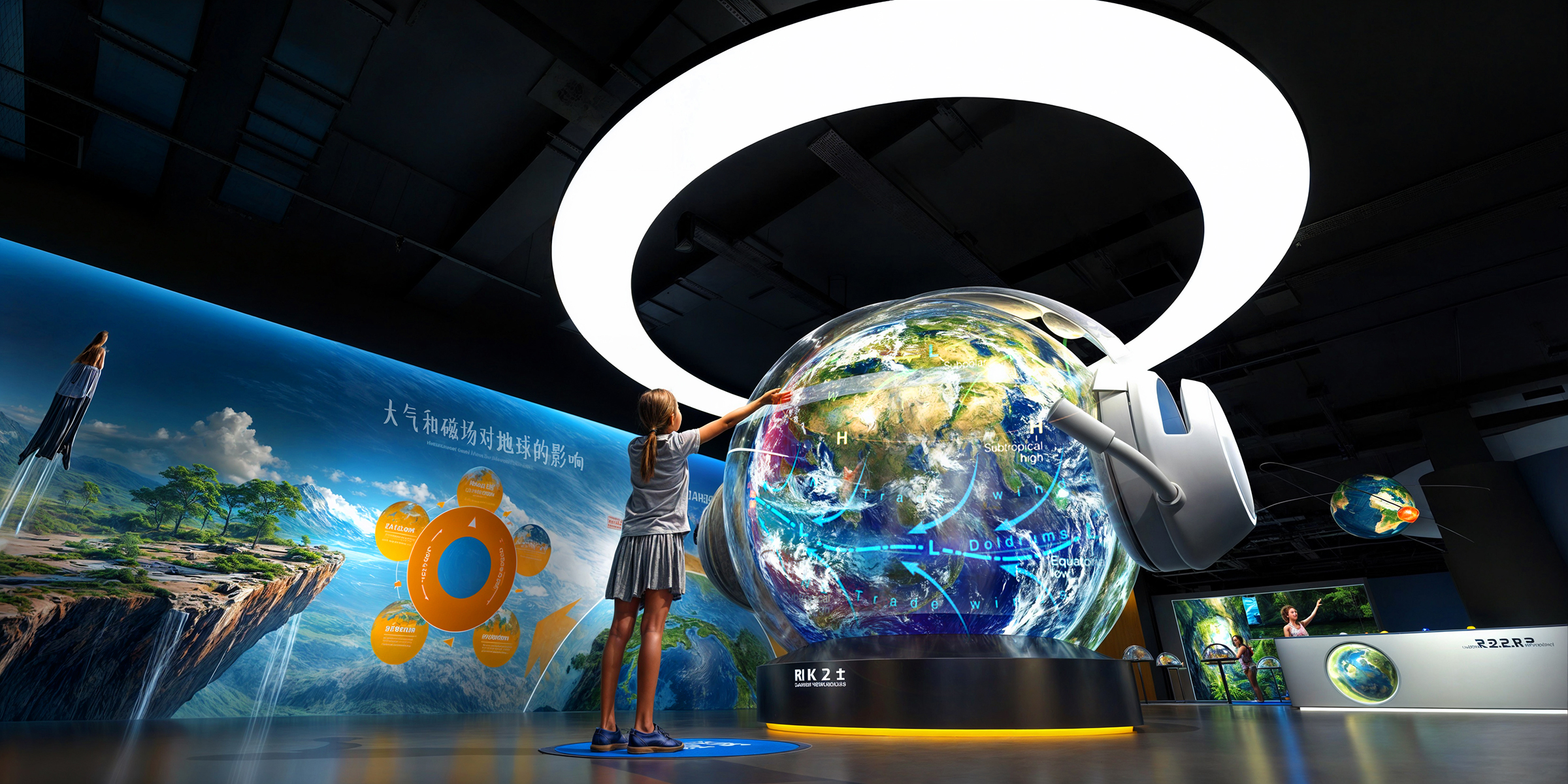
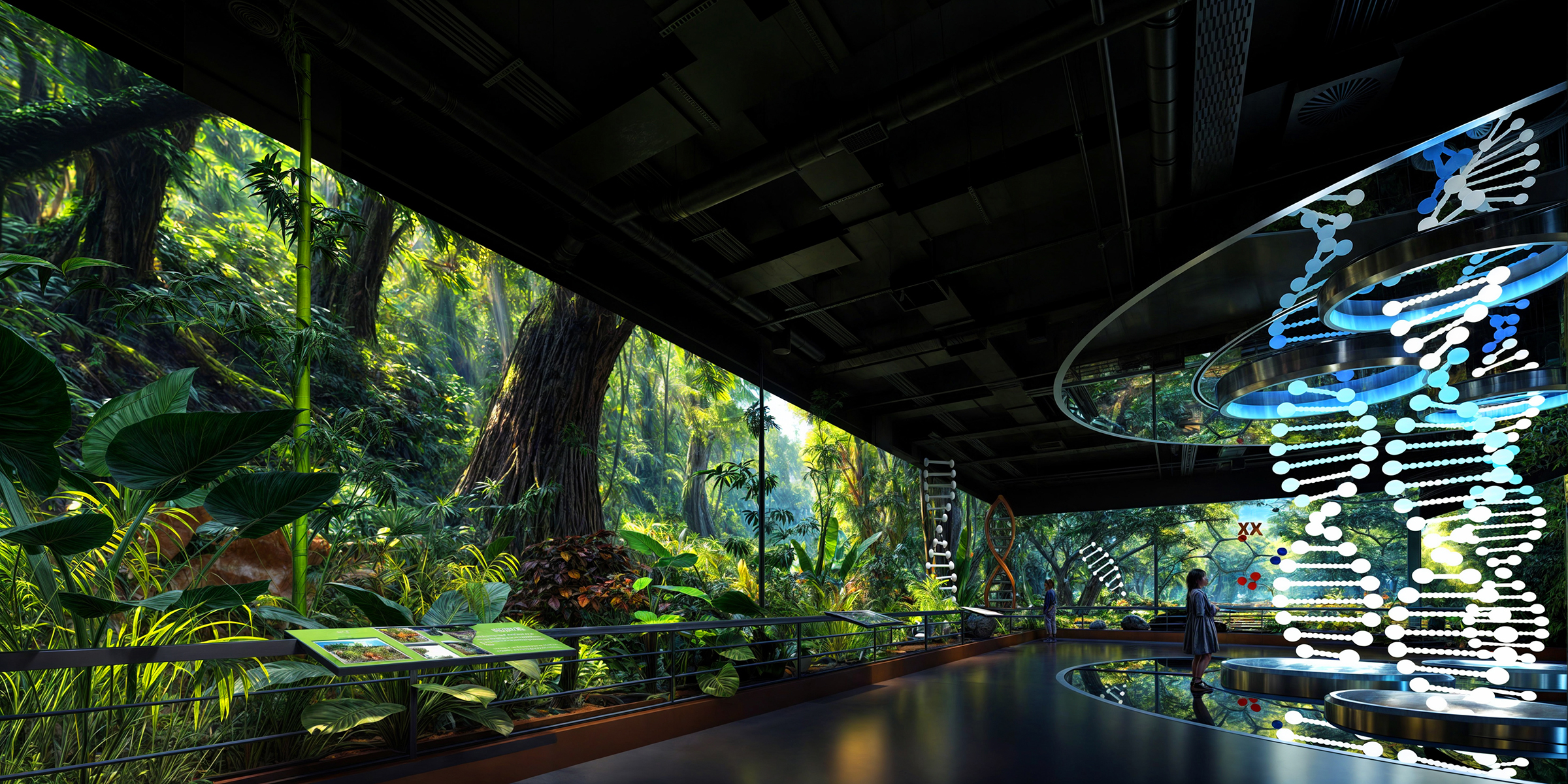
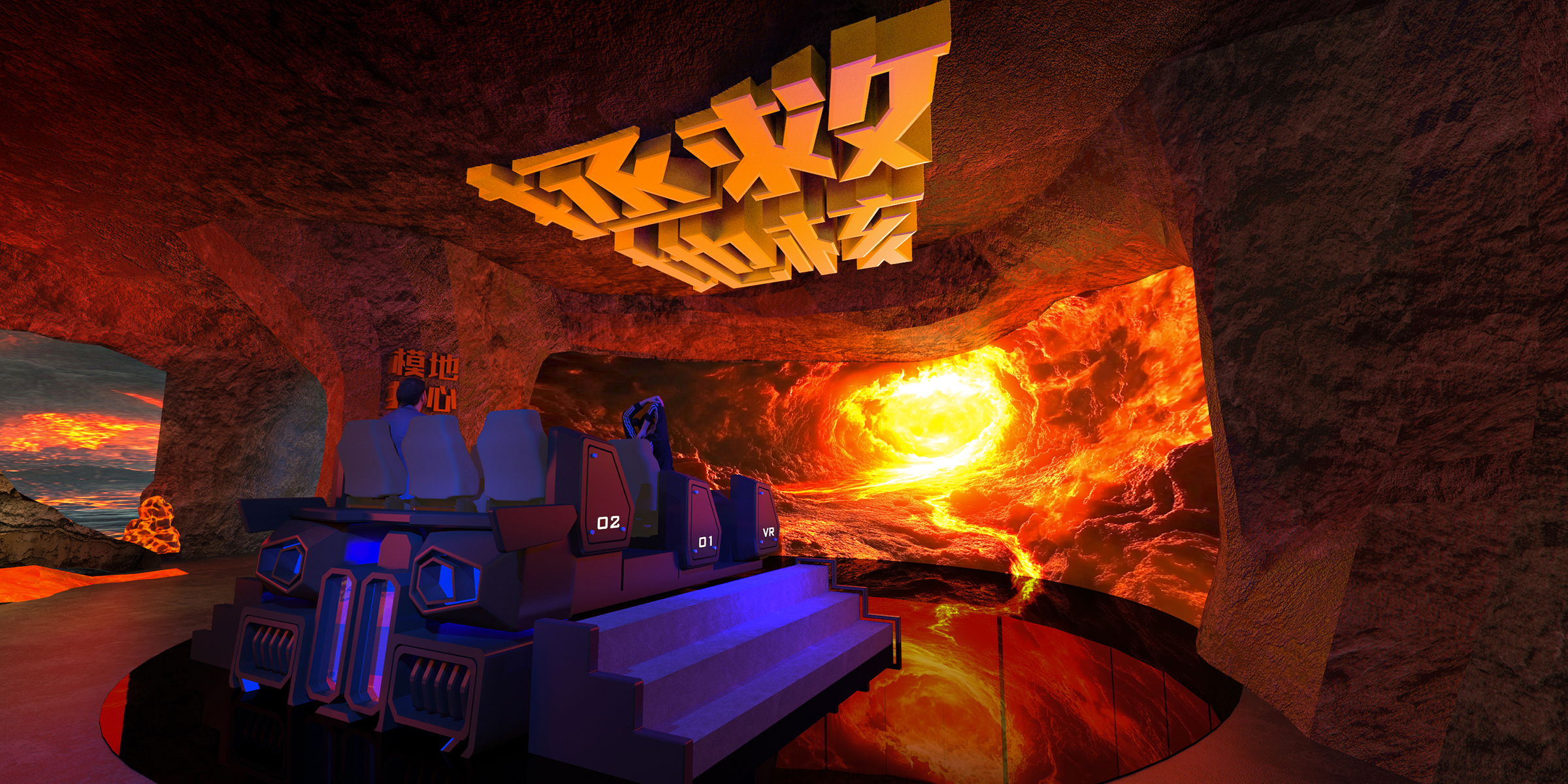
Image Credit : Suzhou Steven Eddie Architectural Exhibition Design Co., Ltd
Project Overview
The Nanping Space Experience Hall stands as the largest space-themed exhibition venue in Fujian Province and represents a new paradigm in science education and cultural tourism. Designed to bridge the public with China’s rapidly advancing aerospace achievements, the project immerses visitors in an awe-inspiring journey through time, space, and imagination. With over 10,000 square meters of exhibition space, it features historical artifacts, advanced interactive technologies, and compelling narrative-driven zones. Led by renowned designer Steven Eddie, the second phase reimagines traditional exhibition logic by fusing virtual reality, sci-fi IP storytelling, and multi-sensory experience design. This ambitious project serves not only as a showcase of national technological power but also as an innovative educational platform aligned with STEAM principles, capturing the wonder of the cosmos and inspiring future generations.
Organisation
Suzhou Steven Eddie Architectural Exhibition Design Co., Ltd
Team
Xu Xiangting, Li Chang, Zhu Lifeng, Chen Jinbo, Xu Jie, Xu Jing
Project Brief
In its second phase, the Nanping Space Experience Hall departs from conventional display methods to pioneer a story-based, interactive exhibition format. Under the thematic arc of "Interstellar Travel," the design team constructs an immersive universe where visitors transition from learners to explorers through a dynamic sequence of plot-driven zones, such as "Moon Palace," "Mars Adventure," and "Journey to the Centre of the Earth."
Guided by original sci-fi IP characters Nan Nan and Ping Ping, visitors engage in tactile, visual, and auditory experiences powered by technologies like MR, holographic projection, and AI-based interaction. These narrative layers turn abstract scientific knowledge into vivid learning experiences. The exhibition integrates national achievements with future-forward imagination, forming a holistic experience that excites the senses and educates the mind. This integration of culture, technology, and education creates an environment where fantasy becomes a gateway to scientific curiosity and innovation.
Project Innovation/Need
This project introduces a breakthrough format for digital science popularisation by moving beyond static educational displays into dynamic, immersive narrative environments. In contrast to traditional science museums, it weaves real aerospace history and achievements into a fictional storyline that allows visitors to experience space exploration on a personal level.
Through original IP characters and gamified missions, knowledge is transmitted through action, choice, and discovery, transforming passive audiences into active participants. The design fosters a cyclical journey of curiosity, learning, and reflection, particularly resonating with younger audiences through contextualised STEAM education. The integration of multiple disciplines—storytelling, spatial design, game logic, and real science—offers a scalable, repeatable model that can influence how science venues evolve globally. This is not just a museum—it’s a launchpad for the imagination and a benchmark for 21st-century science education spaces.
Design Challenge
The biggest challenge of the Nanping Space Experience Hall was balancing scientific integrity, technical feasibility, and emotional storytelling within a large-scale, high-traffic public venue. With a total area of nearly 10,000 square meters and a target audience spanning all ages, the space had to be intuitive to navigate while accommodating complex technological installations such as motion sensors, projection mapping, and interactive learning zones.
Synchronising plot development with spatial transitions required seamless coordination among content developers, spatial designers, and AV engineers. Additionally, materials and exhibit designs needed to withstand daily wear while maintaining immersive quality and safety for children. Lighting also posed a challenge, as each thematic area—from lunar landscapes to volcanic tunnels—required unique lighting atmospheres without interfering with interactive devices. Through careful prototyping, detailed programming, and multi-team collaboration, the design delivered a visually captivating, technically sound, and emotionally resonant experience.
Sustainability
Sustainability was embedded from the ground up, not only through material choices but also in how the project functions long-term as an adaptive, educational system. Locally sourced and low-emission materials were prioritised to reduce environmental impact during construction, including recyclable exhibit structures, energy-efficient LED systems, and modular display components designed for reconfiguration.
The immersive experience zones are powered by smart controls that optimise energy use based on visitor flow. In terms of cultural sustainability, the use of original IP characters and scalable narrative structures enables continuous content updates without physical alterations, extending the venue’s relevance for future audiences.
Operationally, facilities like parent lounges, children's play areas, and themed gift shops contribute to long-term economic viability. This holistic approach—combining environmental, educational, and economic sustainability—ensures the project can grow and evolve with the community it serves, setting a responsible benchmark for the next generation of science and technology museums.
Pop-Ups, Display, Exhibit & Set Design - International
This award celebrates innovative and creative design for a temporary building or interior, exhibition, pop up site, installation, fixture or interactive element. Consideration given to materials, finishes, signage and experience.
More Details

